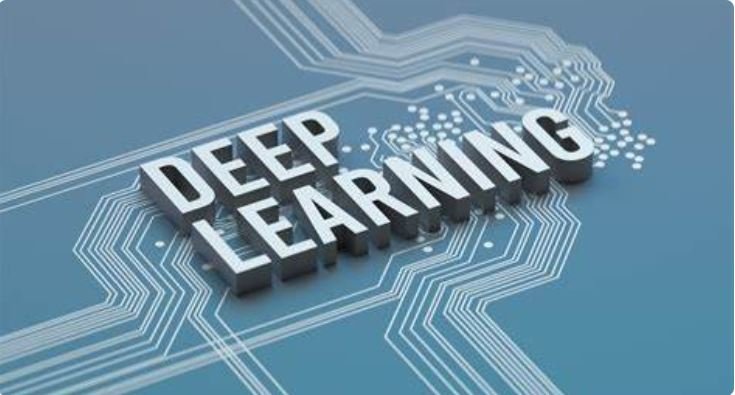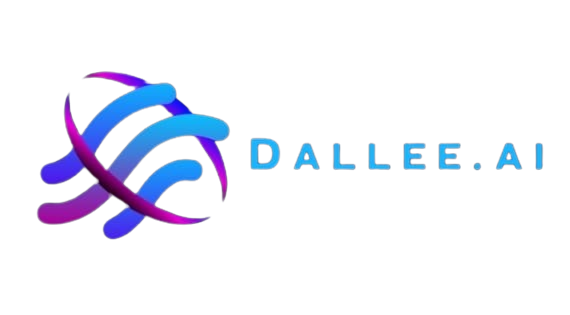Ai News
5 Tips to Get You Started in Deep Learning

Deep learning is the part of machine learning that has seen huge traction in the last decade. It has compelled innovative disruption in wide-ranging fields, from natural language processing to computer vision and autonomous systems. If you are new to deep learning and want to get into it, the journey may look daunting due to its complexity and vastness.
Therefore, with the proper approach and resources, you can overcome these first challenges and set a very strong base for your deep learning effort. Here are five essential tips to get you started in deep learning.
1. Build a Strong Foundation in Prerequisites
Below are some ground-level concepts about the underlying principles and technologies that must be established before working with deep learning. Deep learning builds on ideas from mathematics, statistics, and traditional machine learning. This is the breakdown of crucial focus areas:
Mathematics
- Linear Algebra: Vector, matrix, operations that manipulate matrices, Eigen-values and their vector space, and other key concepts.
- Calculus: You wonder what it means to differentiate and integrate a function; such will be useful in developing optimization algorithms that will be used to train neural networks.
- Probability and Statistics: The basics of the theory of probability and distributions, methods in statistics to be used for the Interpretation of data and modeling of uncertainty.
Programming
- Python: Deep learning is the trend today, and Python is definitely the language that comes to mind first. Thanks to its being user-friendly and having enough libraries and frameworks, there is no doubt that Python will continue to be the only language at the top. Deal with the Python programming language first: data structures, functions, object-oriented programming, etc.
- Librarians: Utilize libraries such as NumPy and Pandas and use Matplotlib or Seaborn for the creation of graphics.
Machine Learning
- Supervised and unsupervised learning: Supervised and unsupervised learning are building blocks in machine learning, although the concept that underlines them is the concept of a model. In general, classification and regression, clustering with dimensionality reduction” will be the metrics of evaluation.
- Algorithms: Be at least conversant with major algorithms like linear and logistic regression, decision trees, and k-means clustering.
2. Start with Deep Learning Basics
Once you have a good, firm grip on the basics, you can dive into the basics of deep learning. Knowing the base concepts of deep architecture will let you easily build and train your neural networks. Here are some key topics you would want to explore:
Neural Networks
- Perceptrons: Putting one’s thinking cap on, the very basic yet important kind of neural network is the perceptron, which is an artificial neuron. Actually, it is a pretty convincing analogy that comes to mind with all these ideas.
- Activate functions: Train on sigmoid, tanh, ReLU, etc. that carry the non-linear function of the network.
Neural Network Architectures
- Feedforward Neural Networks (FNN): FNN is built out of a structure following the input-output paradigm, so information flows only in one direction. The geometry of this structure is non-recurrent.
- Convolutional Neural Networks: Knowing the clear geometrical ordering of the inherent features, it can be said that ordered feature extraction from images is being used a lot in many computer vision and image processing problems.
- Recurrent Neural Networks: Know RNNs, initially designed to run on sequential data and now applied with great success to solve such different tasks as language modeling and time series prediction.
Training Techniques
- Gradient Descent: Learn about this optimization algorithm used to minimize the loss function during training.
- Backpropagation: Understand how it works—the backpropagation algorithm used for updating the weights in the network.
- Regularization: Dropout, batch normalization, and other various techniques to avoid overfitting and ensure generalization.
Read Also: AI Answer Generator | Step-By-Step Guide To Using Answer Generator
3. Leverage Deep Learning Frameworks

Deep learning frameworks all work under the same principle: they make it easy to build, train, and deploy neural networks. They enable you to focus on the high-level design of the models because they already contain pre-built modules and functions for them. Here are three popular deep-learning frameworks to consider:
TensorFlow
- Description: Google’s flexible framework for deep learning and classic machine learning
- Features: Good documentation, a large community, and accompanying tools like TensorBoard for visualization and TensorFlow Lite for deployment of models on mobile.
- Usage: Starting using TensorFlow’s high-level API, Keras: another high-level API of neural networks that facilitates building and training models easily in just a few code lines.
PyTorch
- Overview: PyTorch is deployed by the Artificial Intelligence Research Lab at Facebook. It is known for its dynamic computation graph and ease of use.
- Features: It has a very flexible intuitive interface; hence, PyTorch has remained a favorite among research and experimentation.
- Usage: Leverage PyTorch’s large library of pre-trained models and tutorials to quickly get up and running, building and training networks.
4. Engage with The Deep Learning Community
The community working on deep learning is huge and very active; it has a lot of resources and possibilities for learning and collaboration. Reaching out to the community might be one of the ways to speed up your learning process and gain further valuable insights. Some ways to get involved are:
Online Courses and Tutorials
- Courses: Go through online courses on Coursera, edX, and Udacity. The highly recommended courses on deep learning are “Deep Learning Specialization” by Andrew Ng and “Practical Deep Learning for Coders” by fast.ai.
- Tutorials: Follow tutorials on Medium, Towards Data Science, or any other forums, and deep learning framework official documentations.
Online Forums and Discussion Groups
- Reddit: Subscribe to subreddits r/Machine Learning and r/deep-learning for the latest trends and discussions.
- Stack Overflow: Participate in discussion threads and post questions for community support.
Meetups and Conferences
- Meetups: Join meetups and events around your locality to network with more enthusiasts and professionals working on deep learning.
- Conferences: Attend NeurIPS, CVPR, and ICML, learn from experts in the field, and know the frontier.
Open Source Projects
- Contributions: Contribute to any open-source projects on GitHub or the respective hosting sites. More importantly, one gets to collaborate with others.
- Repositories: Breeze through famous repositories and try to implement the projects that you find of interest to enhance your understanding and skills.
5. Practice with Real-World Projects
Deep learning requires hands-on experience, and working through real-world projects puts all the learned concepts into practice. It hence develops practical skills that will eventually build up your portfolio. Here are some ideas of projects you could do to get started with deep learning:
Image Classification
- Objective: Design a model that can classify images, say, according to what each contains.
- Datasets: Train and test your models using datasets such as CIFAR-10, MNIST, and Imagenet.
- Tools: Implement your models manually with the help of frameworks like TensorFlow or PyTorch, and further carry out transfer learning with the pre-trained models.
Natural Language Processing
- Goals: Develop models that do either sentiment analysis, text generation, or language translation.
- Data: Training may be performed on IMDB review data, SQuAD, and Common Crawl.
- Tools: Run experiments on building and tuning NLP models using libraries like Hugging Face’s Transformers and NLTK.
Time Series Forecasting
- Goals: Develop models that can infer the future values of a given time series—stock prices or weather patterns.
- Datasets: Kaggle, UCI Machine Learning Repository, or any other source, including the financial websites
- Tools: Look at techniques for the application of LSTM or Prophet for Time Series Forecasting.
Generative Models
- Objective: Build models able to generate new data samples, like images, music, or text.
- Datasets: Datasets relevant to your use case. Examples: CelebA for image generation, and MIDI files for music generation.
- Tools: Implement models like GANs and VAEs using deep learning frameworks.
Reinforcement Learning
- Objective: Develop environment-interacting agents that learn from the environment.
- Environments: OpenAI Gym, Unity ML-Agents, or other customized simulation environments.
- Tools: The agents are implemented with the help of libraries provided by TensorFlow Agents and stable baselines to develop reinforcement learning models.
Limitations of 5 Tips to Get You Started in Deep Learning
5 Tips for Getting Started with Deep Learning provides a good roadmap to get started with, but for beginners, it has its limitations. The guide assumes basic familiarity with prerequisite subjects like mathematics and programming, which might not be the case with all the readers.
Further, the breadth of topics touched on might make some people feel overwhelmed and run the risk of information overload. The advice often applies more to individual learning styles and may thus not fit in with the majority of deep learning projects, which are inherently collaborative or cross-disciplinary. Further, real-world applications always tend to rely on delicate, advanced knowledge completely outside of the scope of this manual.
Read Also: Mastering the Chat GPT Image Generator: Tips and Tricks for Best Results
Conclusion
The exciting, demanding journey into deep learning has now begun. Mastering the requirements, the basics of deep learning, using popular frameworks, joining the community, and working on real-world projects should put you right on the spot. Never stop being curious about learning. Reach out and work with others to help, without hesitation. Deep learning is exciting, and there are great benefits if you’re dedicated and persistent.
Follow Dallee for more AI updates and News.

-

 AI Chatbot1 year ago
AI Chatbot1 year agoJoyland AI: An In-Depth Guide to AI Storytelling and Character Creation
-

 Artificial Intelligence1 year ago
Artificial Intelligence1 year agoIs Janitor AI down? Analyzing Janitor AI’s Current Status:
-

 Artificial intelligence1 year ago
Artificial intelligence1 year agoWhat is Chain-of-Thought (CoT) Prompting: A Beginner’s Guide
-

 Ai News1 year ago
Ai News1 year agoChat GPT Login: Easy Step-By-Step Access Guide
-

 Artificial intelligence1 year ago
Artificial intelligence1 year agoBeta Character AI: Everything You Need To Know
-

 Ai News1 year ago
Ai News1 year agoGPT-5: Features, Abilities And Everything You Should Know About GPT-5
-

 Art generator1 year ago
Art generator1 year agoTop 8 Free NSFW AI ART Generators From Text Prompts
-

 Ai Tool1 year ago
Ai Tool1 year agoHow To Make Download Video From Y2mate com 2024



